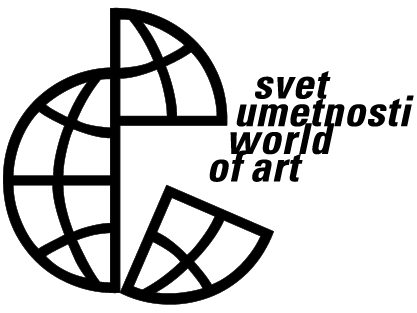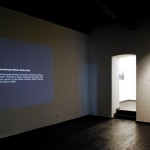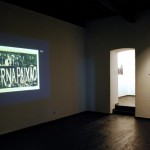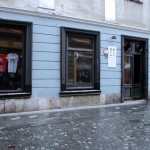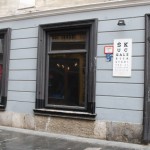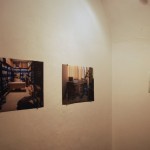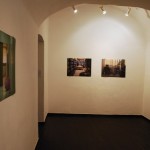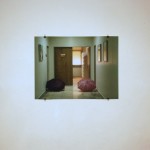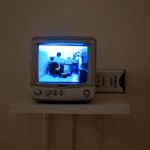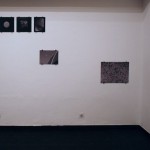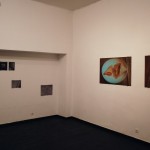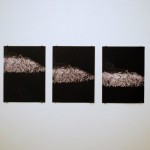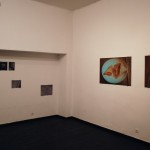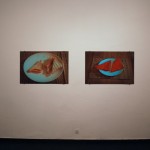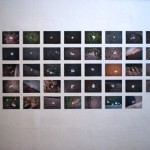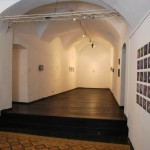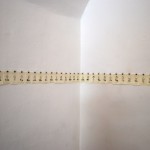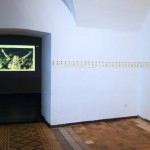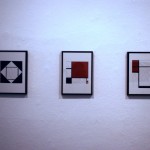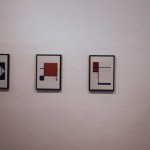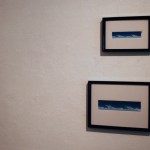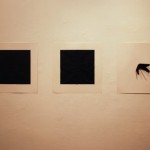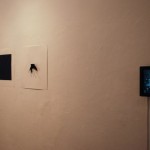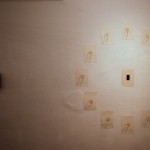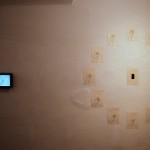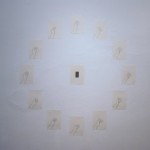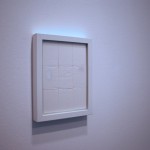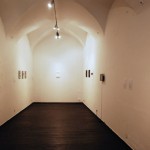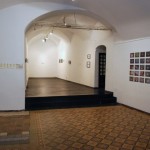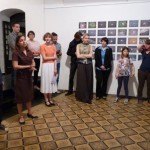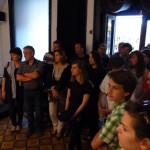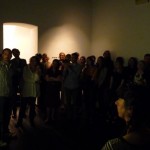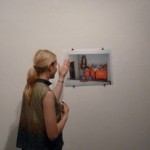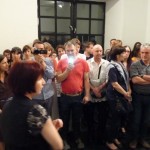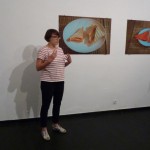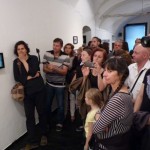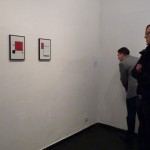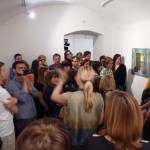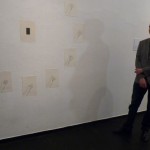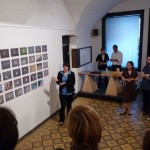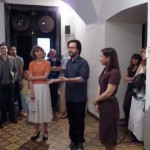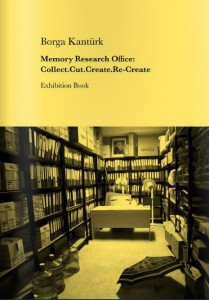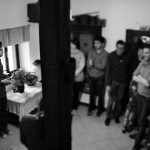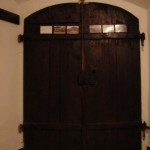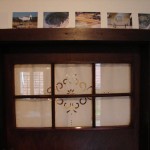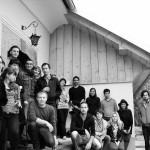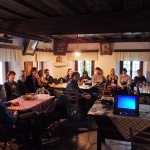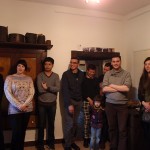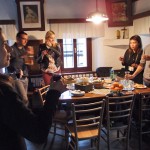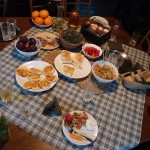Borga Kantürk: Memory Research Office: Collect.Cut.Create.Re-Create
World of Art | School for Curatorial Practices and Critical Writing | Year 15
Borga Kantürk
Memory Research Office: Collect.Cut.Create.Re-Create
Exhibition and guided tour
8–22 May, 2015
Škuc Gallery, Stari trg 21, Ljubljana
Opening: Friday, 8 May 2015, at 8 pm
Preview with the artist, curators and assistants: 8 May, 2015, at 7 pm
Guided tour with the curator and assistants: 20 May, 2015, at 6 pm
Curatorial mapping: Izmir–Ljubljana & Cook-off art event
Lecture (by Borga Kantürk) with discussion: May 3, 2015, at 4 pm
House Pr’ Lenart, Belo 1, Medvode
The exhibition is a practical example of curatorial work and part of the 15th year of the WORLD OF ART – School for Curators and Critics of Contemporary Art. As part of this process and guided by the curators, the participants wrote the accompanying text to the exhibition and equipped the gallery with short descriptions about the works. They also took part in the promotion of the show, its production and technical execution, as well as the concept and implementation of accompanying events (guided tour and education programme for secondary schools).
Curators:
Saša Nabergoj (Head of School),
Simona Žvanut (Coordinator of School)
The assistants are the students of the 15th year of the World of Art School: Petra Bole, Jerko Gluščević, Nina Jesih, Zala Kurinčič, Maruša Meglič, Hana Ostan Ožbolt, Aljaž Plos, Miha Poljak, Mojca Sfiligoj
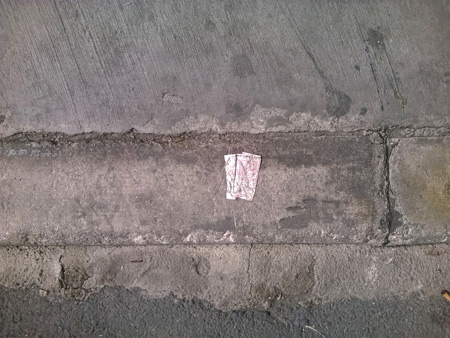
Borga Kantürk, Losers’ Club, 2014–2015
- About exhibition
- Exhibited works
- Video: Opening of the exhibition and preview with the artist, curators and assistants
- Photos: Opening of the exhibition and preview with the artist, curators and assistants
- The Exhibition Book Publication
- Documentary presentation of the exhibition in Turkey
- Accompanying event: Curatorial mapping: Izmir–Ljubljana & Cook-off art event
- CV
- Press material
- Press Clipping
- Colophon
Turkish artist Borga Kantürk is a man of complementary worlds, constantly blurring the boundaries between the roles of artist and curator, between visual and conceptual practice and between different media. This and the specificities of the space in which he works are vital for a detailed reading and understanding of his body of work. He uses his works to answer questions from the local environment, although he can easily be understood within the international context due to the universality of his themes. Kantürk reawakens overlooked, half-forgotten local stories, attributes new meanings to them, hence drawing attention to the blind spots in our understanding of the workings of the world, which we are either not aware of or choose to wilfully ignore. He uses his art to recreate stories, his own history and memories, setting up parallel realities, and hence questioning the ways in which we understand reality. The author’s references more often belong to the world of literature than art – his works reflect the influence of Turkish poetry, Tabucchi, Melville, Borges, Perec, Kafka …
Kantürk’s work must be seen as a complex structure constituting of more or less heterogeneous elements that only make up a whole once combined. These elements are dealt by the author as part of an open system and are used in different constellations and techniques. He is not interested in the execution of a single and unique creation. The creative process is as important, as the final work of art, if not more so.
His art practice is based on archiving: he collects useful objects, photographs, newspaper articles, his own memories … and assembles them into collages, arranges and rearranges them, cuts them up and uses them to create compositions … up to a point of saturation, or until they are made into “historical” documents (Merriam-Webster Dictionary: “an original or official paper relied on as the basis, proof, or support of something”). This can be seen in the installation Playing Around with the Archive and in the video Destructed Archive 2 (After Bologna). With his methodical approaches and spatial interventions, Kantürk calls into question the blatancy of daily social life. We could say that the archive represents the metaphor for life to him. How to choose from the confusing mass of information, how to classify it; what to keep and what to emphasize; what to ignore and what to discard? Or to first select a topic and then attempt to present it, whilst looking for a proper term, or to pursue the path the other way round: to choose seemingly random data, to find some underlying theme, and then develop the story?
Kantürk’s works are traces of transience and disappearance: of time, people, places, memories. The atmosphere has a vital role to play in the artist’s works, which comes as a reflection of his considered planning of the exhibition space, the selected individual parts of the piece (and its choreography), as well as the impressions of the viewers.
Borga Kantürk conveys stories that encroach into his daily life. They deal with the existential questions of identity, belonging and transience. They also include seemingly mundane topics like football in the piece Closing the Ranks, for example, where an imaginary ideology becomes a place to feel reality behind the veil of a neutral spectacle.
The constant game of combining signifiers and signifieds raises the question: What if we understood what we see in a different way? What if the thing that we see is something other than what it is supposed to originally represent? An object together with other objects and in a relationship with its installation gains a new and different meaning, so we must ask ourselves: What is our reality? Could it be different? In such a way the drawings in the aforementioned project are not merely the images of actual football players, a collection of stickers in an annual league album – we are also faced with T-shirts, banners, a video projection, textual material, etc. All these elements combined into an artistic installation raise the issues of mass psychology, politics and the spectacle. They show us that we are forced into this position as fans, even though voluntarily. In Turkish society football support is so ingrained into everyday life – of all the social classes – that many people actually take it for granted. It is precisely this unison of a mass of different objects extracted from their original context that in the work of Borga creates a different understanding of what is seen.
The exhibition by Borga Kantürk was created in close cooperation between the curators, the assistants and the artist. The process was longstanding and delicate, similar to his curatorial and artistic explorations – it was a mutual testing ground, the moving of boundaries, a search for related ideas and common paths.
Jerko Gluščević, Nina Jesih, Maruša Meglič, Aljaž Plos, Miha Poljak
Translated by: Arven Šakti Kralj Szomi
2.EXHIBITED WORKS
Photo: Boris Beja, Škuc Gallery
—
Borga Kantürk, Closing the Ranks, 2009–2011/2015
Closing the Ranks looks at the stories from the history of football from Latin America, Europe and Africa that focus on various social and political manifestations. These stories take place on the football stadium and are infused with revolt, solidarity and passion. Borga Kantürk sees such manifestations in the context of wider social and political implications and does not restrict them purely to the football stadium and football discourse.
The installation includes 34 original drawings with 22 accompanying texts that were digitized for this installation and displayed through a video projection, an artist’s book with the same content as the video projection, and replicas of the football shirts decorated with political slogans, which are displayed in the gallery’s display window.
Miha Poljak
Borga Kantürk: Closing the Ranks, 2009-2011 (online version)
—
Borga Kantürk, Playing Around With the Archive, 2012
Destructed Archive 2 (After Bologna), 2012,
a- Archive Room,
b- Destructed Archive,
c- Study Room (Bologna Process),
d- Umbrellas
The photographed spaces are those which the artist inhabits during his daily movements and engagements as a university lecturer: the academy archive, the artist’s office, the school corridor. The document folders and piles of data in the first photograph have covered up the walls: a space for keeping, storing, preserving (memory, or whom and what exactly?). A forgotten and dusty place that is of no interest to anybody, marked by Kantürk. In the next photograph, the viewer enters the artist’s office after the planned destruction of documents has already taken place. Is the destruction of something still destruction, even when it is something superfluous? Superfluous to whom? Artist – Professor – Official: Borga Kantürk is extremely frustrated by the waste of time (and paper) into which he is forced by the administrative bureaucracy of his Academy and the Bologna Process. The third photograph in the series shows three rubbish containers from Mopak, a Turkish paper recycling and producing company. Here it is unclear whether these same containers also contain those Bologna papers which were so voraciously engulfed by the shredder in the photograph and video. The words keep, store and preserve in connection with rubbish containers gain a new meaning. Recycle? And we come full circle again.
However, the umbrellas in the fourth photograph have also come up with something: the rain is too much of a memory and we will just wait open to be used again.
The artist sets a black-and-white video performance against the static condition of the colour photographs as the still-lifes of modern man and our daily lives. An intimate impression behind the closed doors of his small office. Here, as seen in the video, he mechanically destroys the Bologna papers that have become redundant with a paper shredder. If they were not – as Borga says – redundant in the first place.
Hana Ostan Ožbolt
—
Borga Kantürk, Space Odyssey, 2012
a- Aspirin,
b- Aerius,
c- Sedergine,
d- Moon,
e- Ground (Floor Tile),
f- Steamy
The dynamic layout of the series of six black-and-white photographs already in its title establishes a connection with the legendary film by Stanley Kubrick, which impresses Borga Kantürk with its science-fiction atmosphere and minimalist abstraction. The objects depicted in the photographs are taken from the artist’s daily life and work routine. Those are the things that appear along the way, on the seemingly endless repetitive odyssey from home to work and back again.
Maruša Meglič
—
Borga Kantürk, Ebb and Flow (Carpet), 2014
The artist found the idea for the series of three photographs in the tale of the French sailor Jacques-Yves le Toumelin, who circumnavigated around the globe between 1948 and 1952 in his specially designed sailboat called Kurun.
The artwork entitled Ebb and Flow (Carpet) is made of three black-and-white photographs of a shredded carpet. The artist sees the carpet as an object of everyday life, a part of his home, a safe harbour, without storms and rains. But sometimes, says the artist, our mind wants to escape to the seas and sail just like Captain le Toumelin. However, the artist’s everyday obligations do not allow for this. The carpet connects the artist’s yearnings and daily routine, where dreams, thoughts and hopes of embarking upon a new adventure are possible.
Petra Bole
—
Borga Kantürk, Sandwich Exercise (Homage to Kurun), 2014
The artwork entitled Sandwich Exercise (Homage to Kurun) consists of two colour photographs that show a sandwich and a red napkin (the sail of the yacht). The sandwich represents a part of everyday life to the artist since he has one every day, at the office or wherever he happens to be. This is when he thinks about the future and escaping from his daily routine (like the French sailor Jacques-Yves le Toumelin, who circumnavigated around the globe in his sailboat called Kurun), with a mental process which he calls the sandwich exercise.
Petra Bole
—
Borga Kantürk, Loser’s Club, 2014−2015
In Turkey, many people bet on their favourite sport with hopes of making some quick money. There are many bookmakers (IDDAA) in the cities, which are owned by the state. These can be used by anyone wishing to make a bet. The artist photographed 39 discarded betting tickets that had brought no earnings to their owners. These tickets, lying in the streets torn and dirty, do not detract the optimists eager for riches, who stroll from bookie to bookie.
Nina Jesih
—
Borga Kantürk, Prophets (Soccer Odds) and Temple (Odd Store), 2014−2015
As a rule, football journalists and experts publish the expected results of sports matches in the Turkish press three times per week, and people then make their bets accordingly. Especially the poorer inhabitants believe that these analysts’ predictions of the results are correct, and have taken them to be sorts of prophets to be trusted with their financial lives. Borga Kantürk has drawn 39 portraits of these prophets and has named each one only by their initials, despite the fact that their whole names are published in the newspaper. He also drew one of the state betting houses, the temple of hope, in which these sports bets take place.
Nina Jesih
—
Borga Kantürk, Mondrian Exercise, 2012
The artist made three copies of Mondrian’s painting in the collage technique. He used A4 format carbon paper as a material, which is usually used in the offices of the state administration. He used white carbon paper as the background, onto which he stuck the motif made up of planes of coloured indigo paper in black, red, blue and yellow.
Jerko Gluščević
—
Borga Kantürk, Exercise for Water Landscape, 2012
It is a fact that there is not enough drinking water in Turkey, which is why bottled water brings huge revenues and environmental problems at the same time.
The artist digitally manipulated the two labels of Erikli bottled water, one of the more expensive brands on the Turkish market. He removed all commercial and technical details from the labels and retained only the basics – the image of the landscape with Mount Uludağ (the ancient Mysian Olympus), also known as Keşiş Dağı (Mountain of Monks).
(Although the artist claims that he is not interested in the actual mountain, it is perhaps not entirely coincidental that the monks in this area were a strong focus of artistic rebellion against iconoclasm during the Middle Ages.)
Jerko Gluščević
—
Borga Kantürk, Malevich Exercise, 2015
The piece is conceived as a way of showing the process in which the artist produces the figure of a sloth from paper using the origami technique. It contains three sheets of paper ranging 35 by 35cm in size, painted black. The first sheet is just a cut black square, the second sheet is first folded and then straightened so that the lines of the folds are visible, whereas the third sheet is folded into the form of a sloth. A video beside the piece shows the artist making the origami.
Jerko Gluščević
—
Borga Kantürk, Hand Exercises (For Phone Users), 2015
Hand Exercises is another in the series of works in which the artist continues to practise exercises that could be dubbed as “office art”. These focus on the ways in which society is integrated into technology-based systems through the use of computers, smartphones and similar technologies (especially touchphones) that can no longer be avoided in leading a contemporary lifestyle. In order to use them, we need the help of our fingers. However, should we suffer the fate of an accident that leads to the loss of the fingers, we become socially dysfunctional. The author offers us a finger exercise, in fact, he has prepared his own version of yoga exercises for the office environment.
The drawings are arranged in 12 sections, each representing a certain position, whereas the video animation shows the way in which the hand movements in the exercise should proceed. The author has humorously subtitled the series of drawings as The Process of Laziness. The 12 sections of the Exercise are arranged in a clockwise direction, referring to the 12 hours of the day. The process should be repeated twice a day.
Aljaž Plos
—
Borga Kantürk, White Composition, 2012
The piece contains nine folded hygienic paper tissues stuck onto a background so that they form a rectangle. Buying paper tissues, just like bottled water (tap water is not safe to drink), is part of daily city life. Both are sold practically on every corner. Like in the Malevich and Mondrian exercises this is therefore a sort of “office” art in which the artist uses his daily purchases made on his way to work to the office as part of his artistic compositions.
Aljaž Plos
—
Borga Kantürk, postavitev razstave v Galeriji Škuc, 2015
3. VIDEO: OPENING OF THE EXHIBITION AND PREVIEW WITH THE ARTIST, CURATORS AND ASSISTANTS
4. PHOTOS: OPENING OF THE EXHIBITION AND PREVIEW WITH THE ARTIST, CURATORS AND ASSISTANTS
Photo: Scca-Ljubljana Archive
5. THE EXHIBITION BOOK PUBLICATION
The publication The Exhibition Book by Borga Kantürk, now available online, is yet another phase in a years-long collaborative process between the artist and curators Saša Nabergoj and Simona Žvanut. His solo exhibition Memory Research Office: Collect.Cut.Create.Re-Create at Škuc Gallery, introduced his works for the first time to Slovene audience, and was prepared and produced by the artist and the World of Art School for Curators and Critics of Contemporary Art. Visit issuu digital publishing platform to download and print your copy of the Exhibition Book.
http://issuu.com/borgakanturk/docs/borgakanturk-memoryresearchoffice-e
6. DOCUMENTARY PRESENTATION OF THE EXHIBITION IN TURKEY
Before issuing the publication Memory Research Office: Collect.Cut.Create.Re-Create – The Exhibition Book, the artist Borg Kantürk prepared two documentary presentations of the exhibition Memory Research Office: Collect.Cut.Create.Re-Create in Turkey. The two presentations (the first in the non-profit art space IO in Izmir, 22 May 2015, and the second in the Saha Foundation in Istanbul, 29 May 2015) were conceived as artist’s talks, where he spoke about the conception of the exhibition, work process, group dynamics and about the experience of cooperation with the curators and the World of art school.

ACCOMPANYING EVENT: Curatorial mapping: Izmir–Ljubljana & Cook-off art event
Lecture (by Borga Kantürk) with discussion: May 3, 2015, at 4 pm
House Pr’ Lenart, Belo 1, Medvode
Borga Kantürk appeared in the role of curator and lecturer at the homestead known as Domačija Pr’ Lenart. This is where he prepared an exhibition of small-scale works by Turkish artists, which he had brought with him in a suitcase. The exhibition was accompanied by a presentation of the contemporary Izmir music and visual art scene.

Domačija Pr’ Lenart is located in the hamlet of Belo in the Polhov Gradec hills and was once a self-sustaining hilly homestead cluster. It consists of a residential building and farmer’s estate, a barn with flooring, a granary, a double hayrack, a fruit drying store and an apiary. The architectural elements preserved on the buildings illustrate the architectural development from the 16th century up till today.
Photo: Mojca Sfiligoj and SCCA-Ljubljana Archive
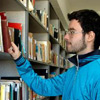 Borga Kantürk is an artist and a curator, born in 1978 in Izmir, Turkey. He studied painting at the Fine Arts Faculty at the Dukuz Eylul Univ. (1995–1999) and finished his Masters programme in painting at the Fine Art İnstitut at the Dukuz Eylul Univ. (1999–2003). He participated in many residential programs (incl. 2005 – HIAP (Helsinki International Artist-in-Residence Programme), 2009 – Sextant et Plus, France etc.) and was active in many cultural organizations: in 2002 he became founder and director of KUTU Portable ArtGallery, he also co-founded K2 Art Center in Izmir, of which he became co-project director between the years of 2004–2007. Kantürk has participated in many local and international exhibitions. He lives and works in Izmir.
Borga Kantürk is an artist and a curator, born in 1978 in Izmir, Turkey. He studied painting at the Fine Arts Faculty at the Dukuz Eylul Univ. (1995–1999) and finished his Masters programme in painting at the Fine Art İnstitut at the Dukuz Eylul Univ. (1999–2003). He participated in many residential programs (incl. 2005 – HIAP (Helsinki International Artist-in-Residence Programme), 2009 – Sextant et Plus, France etc.) and was active in many cultural organizations: in 2002 he became founder and director of KUTU Portable ArtGallery, he also co-founded K2 Art Center in Izmir, of which he became co-project director between the years of 2004–2007. Kantürk has participated in many local and international exhibitions. He lives and works in Izmir.
Artist’s impressions from Ljubljana, Celje and Maribor: https://instagram.com/borgak/
10. PRESS CLIPPING (pdf)
11. COLOPHON
Production: SCCA, Center for Contemporary Arts – Ljubljana / World of Art, School for Curators and Critics of Contemporary Art
Coproduction: Škuc Gallery
Supported by: Ministry of Culture of the Republic of Slovenia, Ljubljana Municipality, Department for Culture, SAHA Dernegi/Association (www.saha.org.tr), Turkish Airlines, European Cultural Foundation, Turkish Embassy in Ljubljana, Moro & Kunst d.o.o., Turkish Restaurant Yildiz Han

Thanks to: Özge Ersoy, Špela Grošelj, Luka Hribar
